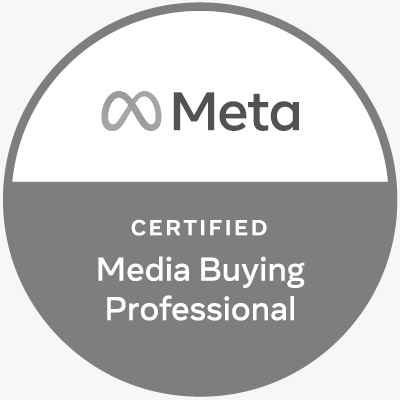Email marketing is one of the most enduring forms of digital marketing, and there’s a good reason for that. It has shown to deliver the highest return on investment of all marketing channels, including pay-per-click advertising and social media marketing.
In fact, for every dollar you spend on email marketing, you can expect an average return of $32, meaning the ROI for email marketing can be up to 3,200 percent.
The most effective email marketing strategies adapt, innovate and grow. In 2022, a powerful way to create a connection with prospective residents of your apartment community is through dynamic email content.
Dynamic email content uses several personalization techniques to create a custom email for each person on your apartment mailing list. But it’s more than just inserting the recipient’s first name into the message.
In this post, we will explain how dynamic email content works and how it can help you boost your apartment marketing game.
What is dynamic email content?
Dynamic email content refers to the personalized parts of a mass email that changes based on the data you have about your subscribers. In other words, it’s sending the same email to your contact list, but the content within the emails varies depending on the segmenting protocols you define. Dynamic email content is also referred to as accelerated mobile pages or AMP emails.
It’s important to note that dynamic email is not the same as list segmentation. List segmentation involves sending a different email to each list, which is still an effective way to deliver the right email to the right person at the right time. However, it requires you to create multiple versions of your email message. With dynamic content, you create and send just one email.
What are the benefits of dynamic email content in Multifamily Apartment Marketing?
Using dynamic email content to stay in touch with your apartment prospects can improve your digital marketing results overall. Here are some positive outcomes you can expect when shifting to dynamic content in email marketing campaigns:
- An enhanced customer experience. Dynamic email content allows you to cater to each member of your audience. You can tailor each email message to reflect a customer’s location, interests and history with your brand.
- A more engaged audience. When the content of an email is tailored to the recipient’s needs and behavior, they’re more likely to engage by following your calls to action by up to 14 percent. It also increases the likelihood that recipients will continue opening your emails. When email content isn’t relevant to the recipient, they’re more likely to ignore your emails or even unsubscribe.
- An improved conversion rate. Dynamic content allows you to target recipients based on their past online behavior. This helps you recommend apartments they’re likely to be interested in, which increases conversions and sales.
- More time for your team to focus on other needs. Personalizing and segmenting different aspects of your email list takes time and effort. When using a dynamic email approach, you just need to create one email and vary the content based on the specific segment. This will free up your time to focus on strategic tasks rather than repetitive ones.

How do you get started with dynamic email content for apartments?
Most email campaign platforms such as MailChimp and Hubspot enable you to set up email campaigns with dynamic content. Follow these steps to start the process:
- Define your email campaign strategy. First, you need to outline your goals. Are you launching a new apartment community and seeking to engage with prospects? Are you offering move-in specials? Are you trying to re-engage with prospects who haven’t yet moved into your community?
- Gather subscriber data. Before you can create dynamic email content, you need to compile information on the people on your list. You can do this several ways, including through subscription forms or customer surveys.
- Segment your audience. Next, determine who your email campaign would appeal to. Maybe you’re targeting people living in a certain city or state. Or maybe you’re promoting sought-after apartment community amenities, such as work-from-home spaces, to people who work remotely.
- Customize dynamic email messages for each segment. There are countless ways to target your subscribers with personalized content. For example:
- Demographics. Using basic demographics is one of the simplest ways to customize your messaging. These include age, gender, geographical location, marital status, education level and occupation.
- Behavioral data. This looks at patterns created by a prospect’s online activity. You can customize an email to fit past leasing history, how they engage with your website or prior email engagement.
- Subscriber preferences. Ask your subscribers what type of content they want from your apartment community. You can give subscribers an option to choose their preferences when signing up for your mailing list.
How do you add dynamic content to emails?
The exact process for adding dynamic email content varies depending on the email service you use. But most email marketing services allow you to use variables to any part of your email, including subject lines, text, calls to action, and images.
- Subject lines. This is an important part of your email because it plays a strong role in determining whether or not a recipient will open it. Research shows that people tend to open emails that have their first names in the subject lines. So, you can personalize your subject lines by adding the name variable to them.
- Email text. A good place to start is with a dynamic email template that allows you to add different variables to suit your needs. You can set the place where you want to show the dynamic text, calls to action, or images in your email.
What are some common mistakes when using dynamic email content?
Dynamic email content can be very effective if done well, but it can backfire if you aren’t careful. Here are some pitfalls of dynamic email content that you should avoid:
- Inaccurate information. You don’t want to approach seniors the same way you’d approach GenZers, so make sure to scrutinize your customer data and segment them accurately.
- Failing to track performance. In order to gauge the success of your dynamic email campaign, you need to evaluate its performance after sending it. Analyze the open and click-through rates, among other metrics, to determine the impact.
- Formatting that distracts users. Your email service likely has many features available for you to use, but adding multiple content blocks in your emails might work against you. Instead, use one or two dynamic content blocks to keep the focus on the personalized content your audience wants.
Dynamic Email Content Conclusion
When you use dynamic email content, you’re delivering hyper-relevant content to your subscribers that can boost conversions while also saving your team time. By using an automated process to tailor your messages to a particular audience, you’re able to engage with your audience in ways that align with their needs and interests at the moment. A great example is ResMate, which automatically analyzes prospects’ needs and sends unique dynamic email content to each, boosting tours and upping lead-to-lease rates. Reach out to us to learn more.





